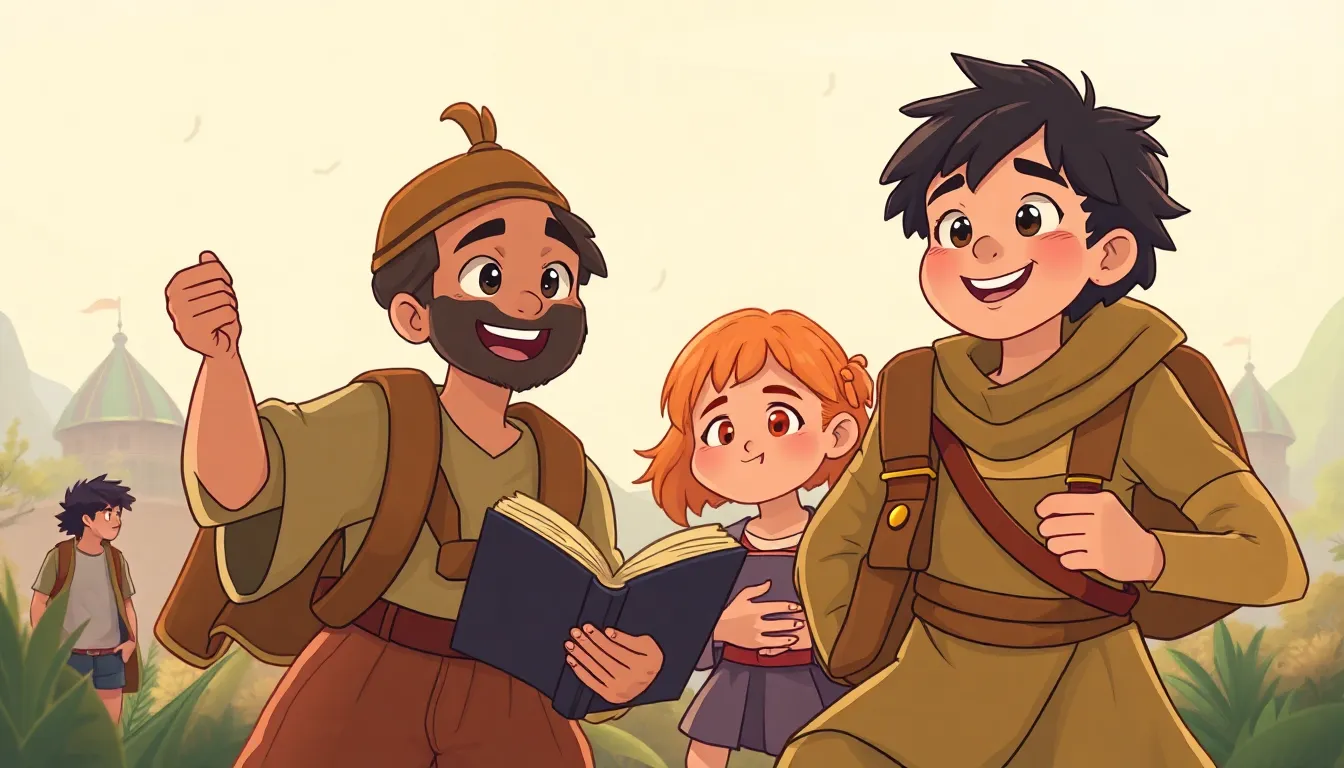
🌍 Adventures in World Literature
Introduction
Every culture has its own treasure chest of stories—tales of heroes, clever animals, magical places, and everyday life. When we read books from around the globe, we open a window to different languages, traditions, and ideas. This guide will help you explore World Literature, discover why stories travel, and even try a mini‑experiment of your own!
1. What Is World Literature?
World Literature means books, poems, and folktales that come from many different countries.
- Genre – a category of literature (e.g., fairy tale, adventure, mystery).
- Folklore – traditional stories passed down orally (by speaking) from generation to generation.
Why it matters: Reading stories from far‑away places expands our Vocabulary (the words we know) and our Empathy (the ability to understand how others feel).
2. Stories from Different Countries
| Country | Famous Story | What You’ll Learn |
|---|---|---|
| Japan | The Tale of the Bamboo Cutter (a moon‑child legend) | Respect for nature and the idea of Impermanence (things change). |
| Nigeria | Why the Sun and the Moon Live in the Sky (a folktale) | How cultures explain natural phenomena. |
| Russia | The Snow Maiden (a fairy tale) | The power of Perseverance (keep trying). |
| Mexico | The Legend of Popocatépetl and Iztaccíhuatl (a mountain love story) | How love can become part of the landscape. |
Did You Know? The same story can appear in many cultures with different characters! The “Cinderella” pattern shows up in China, Egypt, and the United States, each version reflecting local customs.
3. How Stories Travel – Cause and Effect
-
Trade Routes (like the Silk Road) carried Manuscripts (hand‑written books) across continents.
- Cause: Merchants needed maps and stories to entertain travelers.
- Effect: Tales such as One Thousand and One Nights spread from the Middle East to Europe.
-
Translations turn a story written in one language into another.
- Cause: Scholars wanted to share knowledge.
- Effect: Children in Brazil can read a German fairy tale in Portuguese.
-
Modern Technology (the internet, e‑books) lets us download a Japanese manga in seconds.
- Cause: Faster communication.
- Effect: Kids worldwide can discuss the same story in real time.
Understanding cause and effect helps us see why we can read a story from a country we’ve never visited.
4. Mini‑experiment: “story Swap Map”
Materials (you probably have at home):
- A blank world map (print one or draw on paper)
- Sticky notes or small cards
- Markers
Steps
- Choose One Story from a country you haven’t read before.
- Write the title, a short summary, and one new word you learned on a sticky note.
- Place the note on the country where the story originated.
- Ask a friend or family member to pick a different country, read a story from there, and add their note.
- Look at the map: notice which continents have the most stories and think about why (maybe because of trade routes or colonization).
What You’ll Discover: How literature spreads like a network of bridges connecting cultures.
Conclusion – Keep Exploring!
World literature is a passport that never expires. Each new book adds a Vocabulary gem and a fresh perspective on life. Pick a story from a country you’ve
never read before, and share what you learned with a friend or family member.
Happy reading and discovering!
Quick Quiz
-
Which story explains why the Sun and Moon live in the sky?
a. The Tale of the Bamboo Cutter
b. Why the Sun and the Moon Live in the Sky ✓
c. The Snow Maiden
d. The Legend of Popocatépetl and Iztaccíhuatl -
What helped stories travel along the Silk Road?
a. Airplanes
b. Trade routes carrying manuscripts ✓
c. Television
d. Smartphones -
Which word means “the ability to understand how others feel”?
a. Vocabulary
b. Empathy ✓
c. Perseverance
d. Impermanence
Keep turning pages and building bridges across the world!